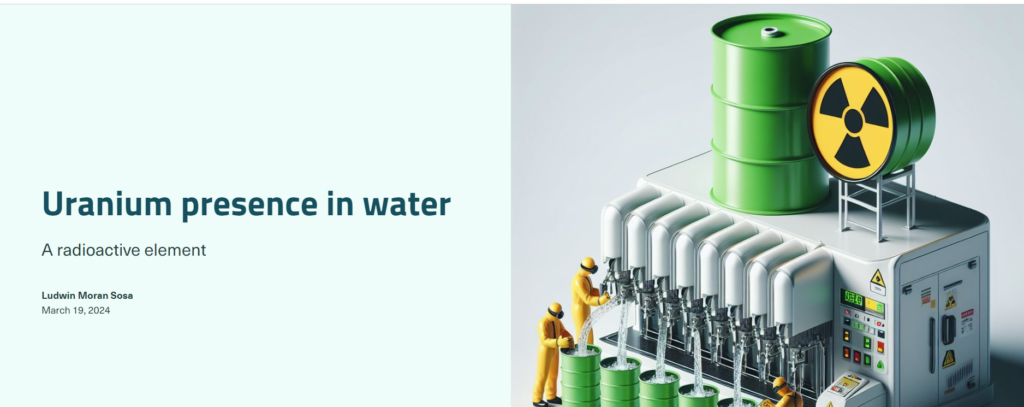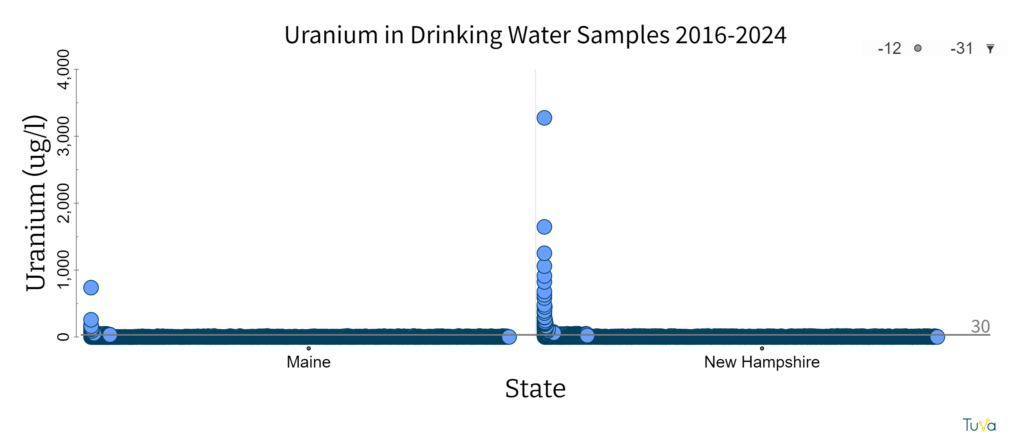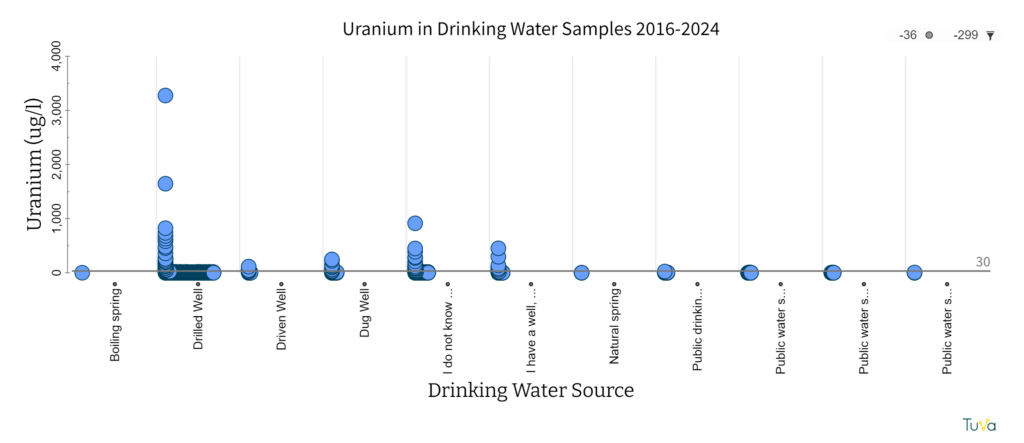Why Uranium is a problem
Both Maine and New Hampshire have bedrock that naturally contains uranium, a radioactive element. The EPA has set the federal Maximum Contaminant Level (MCL) for uranium in drinking water at 30 µg/L.
Chronic exposure to drinking water with elevated levels of uranium can deleteriously affect kidney health. In fact, Maine reports that “people who drink water with too much uranium are more likely to have changes to their kidneys that make their kidneys work in the wrong way. These changes go away once you stop drinking water with too much uranium, and they have not been linked to kidney disease or damage.”
1. Learn more about uranium in our Uranium Presence in Water StoryMap
The Uranium Presence in Water StoryMap explores all aspects of uranium, from its discovery as a fuel source to the health effects of exposure through drinking water contamination.

2. Explore the Drinking Water Dataset in Tuva
All the drinking water data generated in the SEPA project can be found on our custom Tuva platform at arsenicdata.tuvalabs.com. Both Maine and New Hampshire have bedrock with naturally occurring uranium. The dot plot below shows that there are more drinking water samples with uranium exceedances in New Hampshire than in Maine.

Focusing only on the New Hampshire data, it appears that the uranium exceedances are from drilled wells rather than other wells or public sources. This may indicate that outreach to community members is needed to help them determine their water source and test their water if it comes from a drilled well in order to mitigate contamination.
